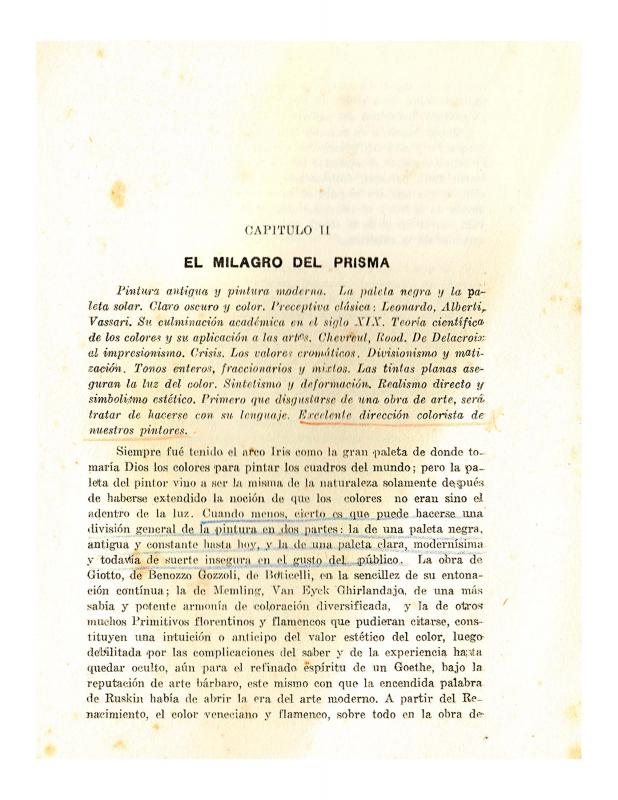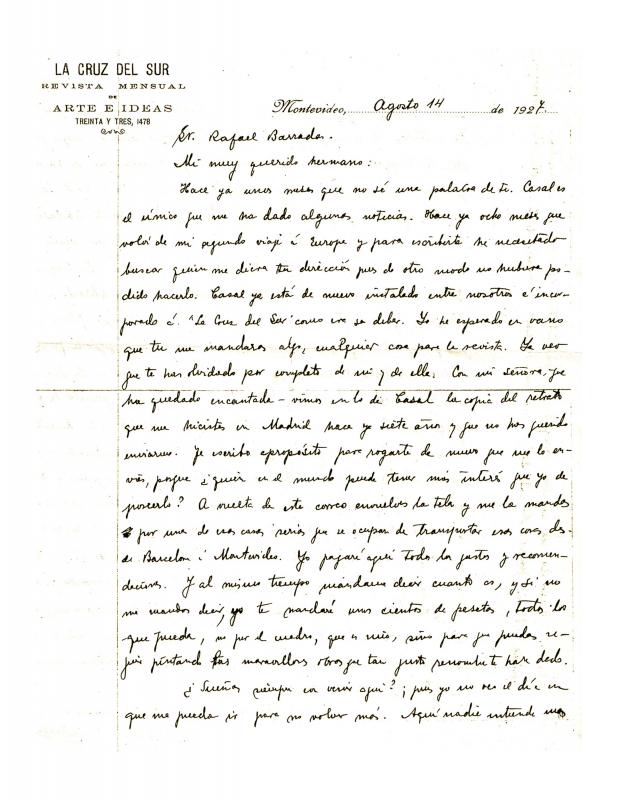In this text, Alberto Zum Felde (1887–1976) discusses how, in the 1920s, Latin Europe (Spain and France, in particular) see Spanish America. He attempts to capture the orientation of a possible “unique culture of the Americas” on the basis of Spanish and French influences, disregarding the indigenous culture crucial to most of the countries on the continent. Zum Felde argues that the “body” of Spanish America is Spanish, but its “spirit” (meaning its intellect), in art and politics particularly, is French. He looks, in a singular way, to the thinking of José Enrique Rodó on the “Latinness” of Spanish America, calling Greece and Rome “our historical grandparents.” But Zum Felde, unlike Rodó with his driving idea of “nordomania,” not only praises North American “utilitarianism”—which he sees as having an ethical basis if lacking the tragic Latin pathos—but also considers French culture the melting pot of European philosophy and art. Zum Felde longs for a “unique, distinct, and generic personality” for Spanish America (“or Latin America, as the Gallicists would have it”).
Using Nietzschean categories, the author argues that there is a direct correspondence between the Spanish influence on South America and its “Dionysian” spirit, just as there is a correspondence between the French influence and the “Apollonian” nature of elitist culture throughout Ibero-America. Those polar Nietzschean categories can be applied to culture as a whole, not only to the field of art. The first represents “the energy of the blood” and the second the energy of the “rational order” [on that subject, see in the ICAA digital archive “Cansinos Assens comenta ‘Estética del Novecientos’” (doc. no. 1197025) and “Referencias sobre identidad, cultura y arte en Latinoamérica” (doc. no. 1183641)].
Founded in 1923, Teseo, Agrupación de Artistas y Escritores Uruguayos was an influential association in Montevideo. Its director, writer Eduardo Dieste (1881–1954), played a very important role as a thinker and as a communicator of ideas on art in Uruguay in the 1920s. The group’s publication, TESEO, was a local attempt to convey and affirm the theoretical traditions of European thinkers from the perspective of Uruguay.
[For further reading, see in the archive the following texts published in TESEO (Agrupación de Artistas y Escritores Uruguayos): by Eduardo Dieste “Bernabé Michelena, escultor” (doc. no. 1220780), “El drama de la pintura [TESEO, Discusión estética y ejemplos]” (doc. no. 1217147), “Humberto Causa, otro pintor de la luz” (doc. no. 1221130), “José Cuneo pintor de la luz” (doc. no. 1217703), and “El milagro del prisma [TESEO, Discusión estética y ejemplos]” (doc. no. 1217097). See also the following: by José Cuneo, Bernabé Michelena, et. al. “Boletín de TESEO [Agrupación de Artistas y Escritores Uruguayos]” (doc. no. 1182637); “Carta a Rafael Barradas” (doc. no. 1250919); “De la invención en la pintura” (doc. no. 1245854); by the Escuela Taller de Artes Plásticas (ETAP) “Escuela Taller de Artes Plásticas al Ministro de Instrucción Pública [carta institucional en borrador]” (doc. no. 1265434); “Primer Grupo Argentino de Pintores Modernos” (doc. no. 1228165); by Alberto Zum Felde “Programa” (doc. no. 1196932); by C. L. “Teseo. Los Problemas del Arte” (doc. no. 1223765); and by Alberto Lasplaces “Uruguay Olímpico” (doc. no. 1254039)].














